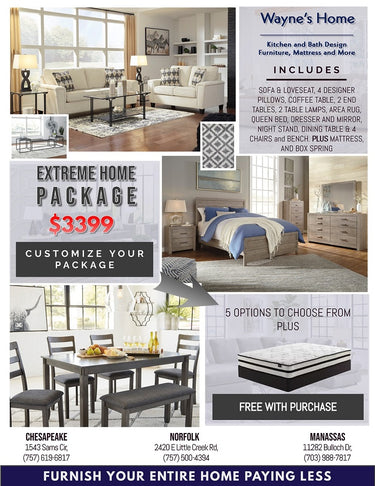Supplement the Complete Look Of Your Bedroom: Nightstands, Dressers, And Others
Main Points to Note
The framework of a cohesive bedroom furniture layout begins with the bed, then extends to the bedside dressers, and finally to the accents.
Take appropriate measurements: nightstands should be positioned ~2-4" higher or lower than the bed's mattress.
Mix, don't muddle: incorporate one element of design, such as a repeatable pattern, silhouette, or wood tone, to harmoniously merge diverse styles.
Storage should harmoniously align with the routines of users; ideal dressers for shared rooms are horizontal, while tall chests fit tight spaces.
Textiles, mirrors, and lighting should be added last to transform "matching" into a refined, polished equilibrium.
As an orchestrated masterpiece, your bedroom should be imagined as follows: the bed as the lead actor, while nightstands and mirrors take up supporting roles. A well-designed and coordinated layout, combined with meticulously styled detailing of the furniture pieces, brings a sense of calm and intention to any room. A coordinated furniture is straightforward to achieve.
Start With the Anchor: The Bed
To illustrate, a king bed consumes a room's entire floor space, while a queen bed in a spacious suite may appear out of place. Headboard height matters, as it has some bearing on the visual balance of the room, along with the lamps. Total mattress height, on the other hand, matters since it influences how high your nightstands should be. Plush mattresses and bed frames change the required height of your nightstands. Tip: The top of a nightstand should ideally be within 2 to 4 inches of the mattress height for comfortable access.
Nightstands: Form Meets Function
In contrast, a pair of nightstands with drawers and open storage is more open, tidy, and visually interesting. Prioritize:
Shape: width and height should be proportional to the bed. Wider rooms can accommodate broader (28-32") nightstands.
Shape: open shelves for baskets – drawers are more cluttered
Shape: tidy lamps and cords out of the way.
Built-in outlets/USBs: Power
Chargeable nightstands: open/closed space, USB ports, and built-in outlets.
Headboard shapes do matter, as they contribute to visual balance alongside the lamps. The total height of the mattress is relevant for the height of the nightstands.
Based on their height, order matters, and storage: Dressers and chests: storage that scales
Shared storage suitcases and horizontal combined dressers are for wide walls, while vertical chests are for compact rooms.
Elongated rectangle mirrors, approximately two-thirds the width of the dressers, paired with them, maintain the proportions as graceful and in sync.
Don't skip safety: wall anchoring for tall cases is a must.
Materials, Finishes & Hardware: Variety Within "Too Matching"
Achieving cohesion does not entail purchasing an entire collection head to toe. Repeat one unifying design element.
Wood Tone: walnut bed and walnut-accented nightstands.
Metal Finish: Matte black pulls are mirrored in lamp bases or mirror frames.
Silhouette: clean, squared edges to be clean on cross pieces, even if finishes differ.
A light oak dresser, upholstered nightstands, and a metal-framed bed appear curated if one element ties them together.
Layout & Flow: Live in the Space Given
Great rooms are easy to navigate, allowing for a clear path to walk through, such as 24–30 inches around the bed and 36 inches in front of open dresser drawers. Add lamps on cord-managed nightstands placed where bare bulbs would be, without glare on the mirror.
Small Rooms and Spacious Suites
Small Spaces: Low-profile beds, light chests, even lighter finishes.
Large Rooms: Wider nightstands and longer dressers, a reading chair and side table, a cozy zone to the dressers. Add a bench at the foot (¾ of the bed width).
Things Customers Wish to Have
Drawers placed under the beds, inside jewelry trays, bottom cedar drawers, and integrated lighting. Everything was softly closing and felt lined. Quiet daily routines are effortless with these daily luxuries.
Bundle & Budget Celebrate at My Wayne's Home
Create your own "Good/Better/Best" package:
Good: Bed + 2 Nightstands
Better: Bed + 2 Nightstands + Dresser + Mirror
Best: Add a chest or a bench, better hardware, and premium delivery/assembly.
Ask and complete: financing, quick delivery, and haul-away for a full experience.
FAQs: Bedroom Furniture:
1) What pieces belong in a complete bedroom set?
At minimum: bed and two nightstands. For shared storage, add a dresser and mirror, and then consider a chest, bench, or wardrobe, depending on the available space.
2) How do I match woods and finishes without looking 'too matchy'?
One constant (wood tone, metal, or silhouette) should be repeated, and the others should be varied. For instance, use brass hardware on mixed woods.
3) What's the right nightstand height?
The nightstand height should be within 2–4 inches of the mattress height for bed-bound reach to be comfortable.
4) Dresser or chest—which should I choose?
For broad walls and shared use, choose a dresser. For saving floor space or adding vertical storage, choose a chest.
5) What area of the rug should go underneath the bed?
Standard recommendations suggest 8x10 under a queen, 9x12 under a king, which allows for balance and comfort with a visible rug on both sides and at the foot of the bed.
6) What indicators of the brand's reputation and quality can be assessed before the purchase?
Quality markers to look for include the absence of gaps on joints, sturdy frames, balanced drawer action with full-extension glides, even finishes, and trustworthy warranty policies, all of which are indicators of furniture meant to last.







